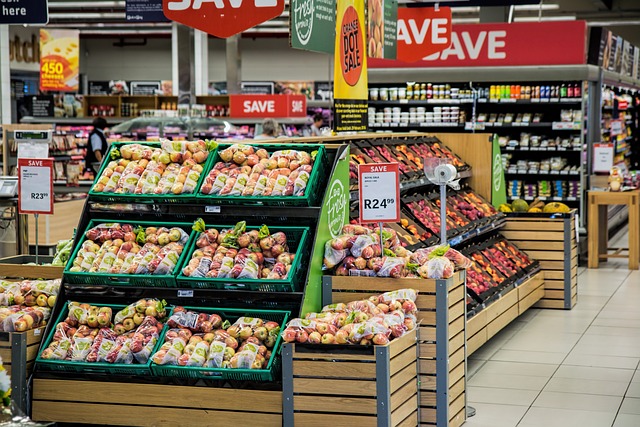Grocery: How stores, producers, and markets connect food, goods, and communities
Grocery purchases touch many parts of daily life beyond just food: packaging, sourcing, display, and the marketplaces where items change hands. Understanding how grocery environments intersect with antiques, collectibles, vendors, craft producers, and outdoor markets helps shoppers, small sellers, and local services coordinate supply, presentation, and customer experience in practical ways.

antique: What role do antique items play in grocery spaces?
Antique elements in grocery environments usually appear in décor, display, or packaging rather than in the food itself. Historic signage, repurposed glass jars, wooden crates, or vintage scales can give small or specialty stores a distinctive atmosphere that supports branding and perceived authenticity. For collectors and store owners, using antique fixtures requires attention to hygiene and food-safety regulations—antique surfaces may need sealing, and any reused containers must meet modern standards for storing edibles. Antique pieces are often more about visual storytelling than functional necessity in grocery operations.
collectible: How do collectible products fit within grocery retail?
Collectible grocery items are typically limited-edition packaging, promotional tins, or seasonal product runs that appeal to enthusiasts. Examples include collectible soda bottles, commemorative cookie tins, or regional product labels that reflect local culture. Retailers may use collectible releases to create short-term interest and drive visits, while small producers can gain visibility by partnering with local services or co-packers to produce special runs. Collectible items should be clearly labeled with ingredients and storage guidance to avoid consumer confusion.
vendor: How do vendors and suppliers interact with grocery stores?
Vendors supply grocery stores with everything from fresh produce to household goods. For independent and craft vendors, building relationships with grocery buyers often starts at a local level—farmers markets, community food hubs, and food incubators are common entry points. Grocery buyers evaluate vendors on quality, consistency, packaging, liability insurance, and ability to meet local regulations. Collaborative vendor programs, shelf-space agreements, and consignment arrangements are common models. For vendors aiming to work with stores in your area, preparing clear product sheets, samples, and compliance documentation helps streamline onboarding.
craft: What is the place of craft and artisanal products in grocery?
Craft products—such as small-batch preserves, handmade snacks, or artisanal condiments—have become common in specialty grocery sections. Craft producers often emphasize traceability, small-scale methods, and unique flavors. Stores that curate craft items typically balance shelf rotation and pricing strategy to avoid waste, since small-batch items may have shorter runs. For craft sellers, partnerships with local services like food safety consultants, shared commercial kitchens, and cooperative distribution networks can be effective ways to scale while preserving product integrity.
outdoor: How do outdoor markets and events support grocery ecosystems?
Outdoor markets, pop-up markets, and seasonal fairs provide vendor access to customers and act as testing grounds for products destined for grocery shelves. These outdoor venues allow direct feedback, brand exposure, and immediate sales without the overhead of full retail placement. Weather, permitting, and temperature control are operational considerations—perishable goods require monitoring and compliant packaging. Many grocery stores source new vendors from the outdoor market scene, and local services often organize market spaces, permitting guidance, and shared refrigeration options to support vendors.
For shoppers and small sellers seeking to connect with stores or markets, here are several established providers and organizations that commonly intersect with grocery operations and vendor development:
| Provider Name | Services Offered | Key Features/Benefits |
|---|---|---|
| Whole Foods Market | Supermarket retail with specialty and organic products | National chain with category buyers for specialty/local producers; shelf-ready merchandising |
| Kroger | Full-service supermarket and private-label manufacturing | Broad distribution footprint; opportunities for regional supplier programs |
| Aldi | Discount grocery retailing | Streamlined SKUs and cost-efficient private-label options; useful benchmark for pricing strategies |
| Instacart | Grocery delivery and pickup platform | Connects multiple grocers to online customers; useful for expanding reach without store placement |
| Local Farmers Market Associations (varies by city) | Organize outdoor markets and vendor permits | Direct access to local customers; entry point for craft and small-batch vendors |
Conclusion
Grocery systems are a network of physical stores, online services, individual vendors, and community markets. Antique and collectible elements influence presentation and consumer interest, while craft producers and outdoor markets provide innovation and local variety. Understanding how vendors interact with grocery buyers and which service providers facilitate distribution helps sellers and shoppers navigate options in their area while maintaining quality and compliance.




